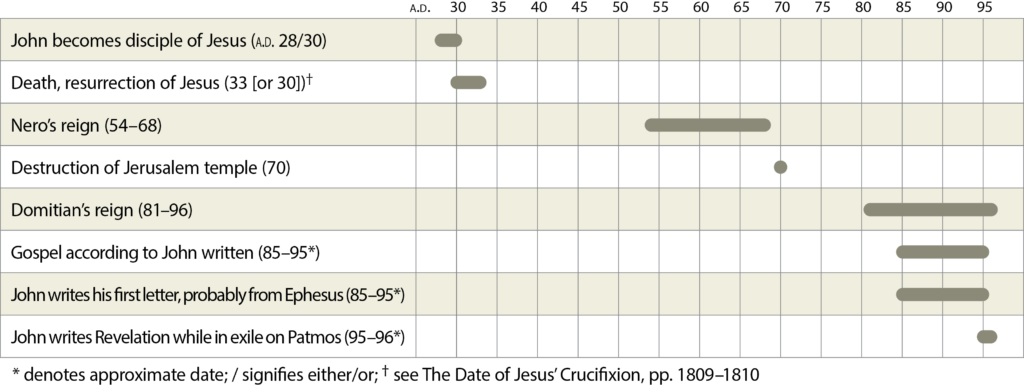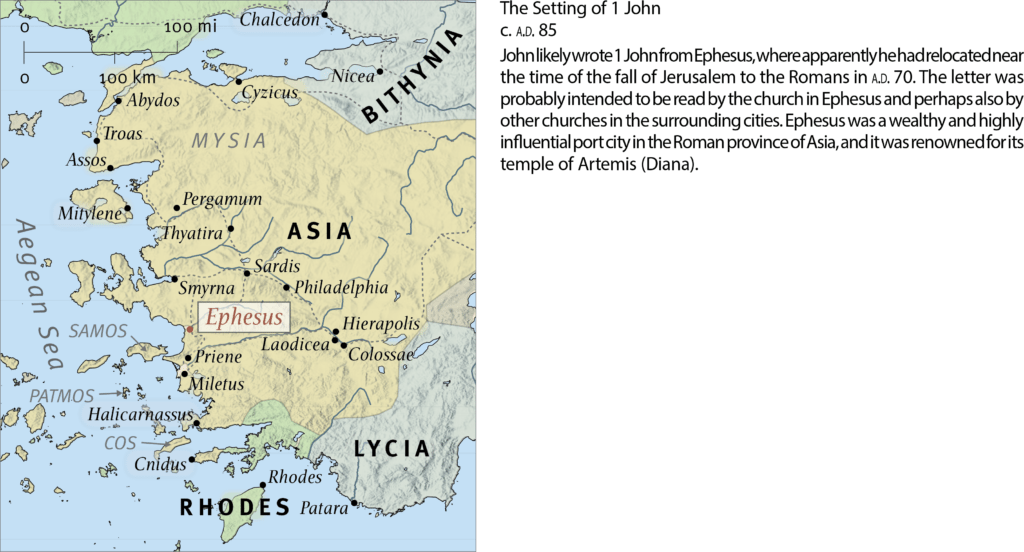Genre
First John lacks certain earmarks of a typical Hellenistic letter. For example, the writer does not name himself at the outset (as Paul always does), and the book is somewhat sermonic in tone. Yet on several counts it is highly letter-like, as seen from the expressed motive of shared joy (1 John 1:4), the repeated mentions of the act and purpose of writing to his recipients (13 uses of the Gk. verb “I write”), and the many instances of direct address to the readers. First John was judged to be in the form of a letter by ancient writers such as Irenaeus, Dionysius of Alexandria, and Eusebius, who would have understood the prevailing conventions of letter writing.
Style and Substance
The rhetoric of 1 John is challenging. John rarely sustains a clear line of argument for more than a few lines or verses. He wanders from subject to subject, unencumbered by any discernible outline. Yet if he has no plan, he does follow a pattern: after leaving a subject he often returns to it. His style of thought has been termed circular rather than linear. It has also been termed symphonic, in that he states themes, moves away from them, and then revisits them with variations.
While the rhetoric of 1 John poses difficulties, his content is rich in doctrinal substance, ethical challenge, and devotional fervor. John is insistent that no one has ever seen God the Father in his unmediated glory (1 John 4:12; see John 1:18), yet just as insistent that to know Jesus is to know “the true God and eternal life” (1 John 5:20). The mystery of this dialectic suffuses the letter from start to finish and moves John to write with insight, consistency, intensity, and depth. Yet his language is for the most part simple and his vocabulary modest. Line for line there are few biblical writings that surpass 1 John in the imposing demands made on the reader along with the rich rewards that studied interpretation will yield.

Literary Features
First John is ostensibly an epistle, but its content is more fluid than what is found in most NT epistles. There is no epistolary salutation, nor is there a conventional epistolary conclusion. A more accurate designation is to call this book a treatise or pamphlet. Alternately, it can be read as an address or loosely structured sermon. The topic changes with virtually every paragraph, so the best advice for reading the book is to “think paragraphs.”
Nonetheless, even though the structure of 1 John is not strictly linear, the author keeps coming back to topics that have been introduced earlier, so that readers can profitably think of the book as being arranged like a musical symphony. The main theme is tests by which we can know if we are in Christ—beliefs and attitudes that authenticate one’s claims to be a Christian. Under that umbrella, subordinate themes appear: Christology (doctrine about the person and work of Christ); walking in the light; love; and the need to reject fallen, worldly culture. These topics weave in and out of the book. The book is structured on an implied dialectical principle in which John continuously seeks to oppose viewpoints that are contrary to his assertions. For example, John’s assertions that Christ has come in the flesh (1 John 1:1–3 and 4:2) are an implied refutation of those who deny the incarnation. Finally, there is an incipient poetry and mysticism about John’s writing, so that, for example, a lot of what John asserts about the Christian life is embodied in great symbols like light and darkness, or walking and abiding in Christ.










